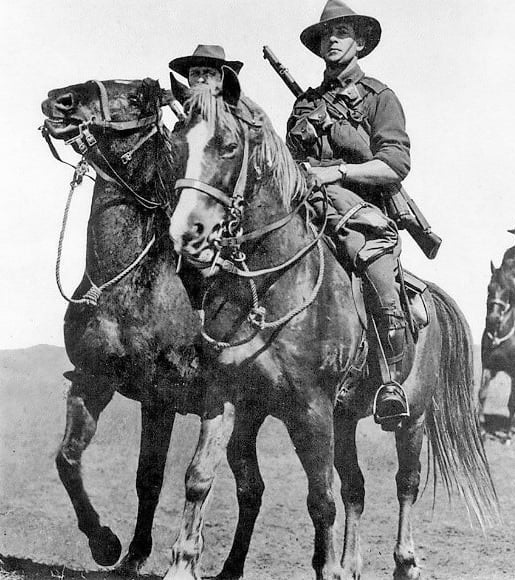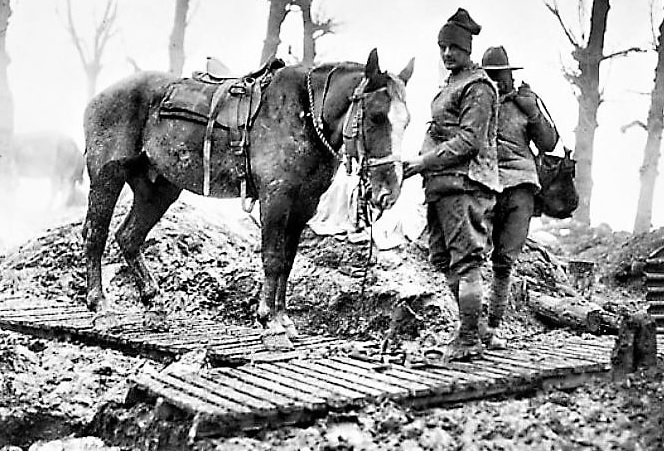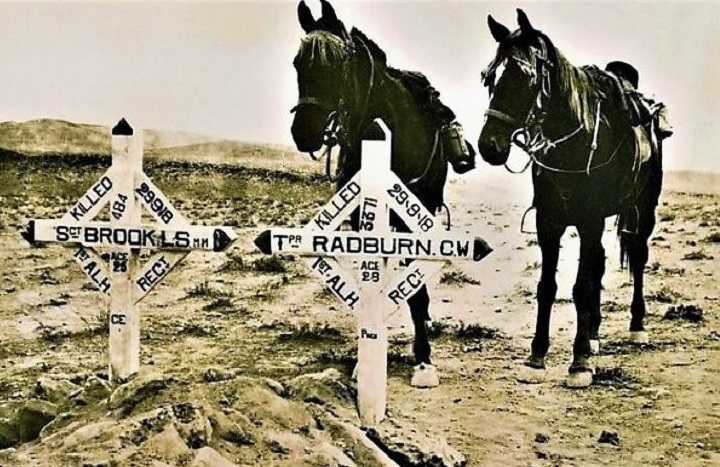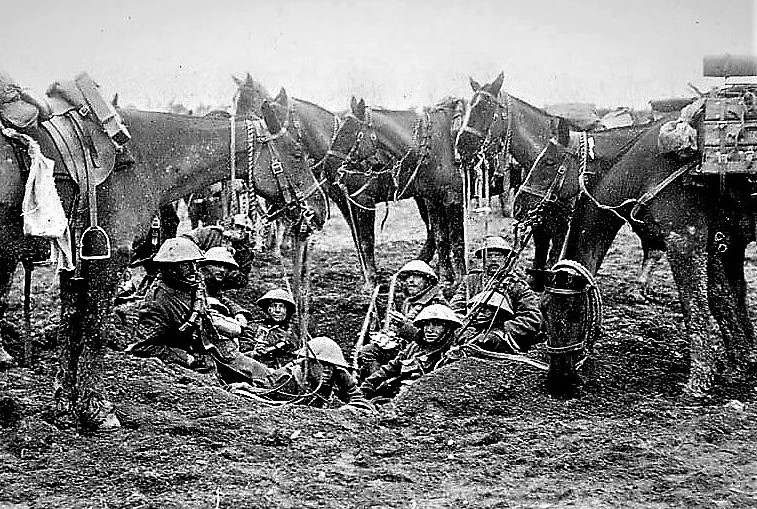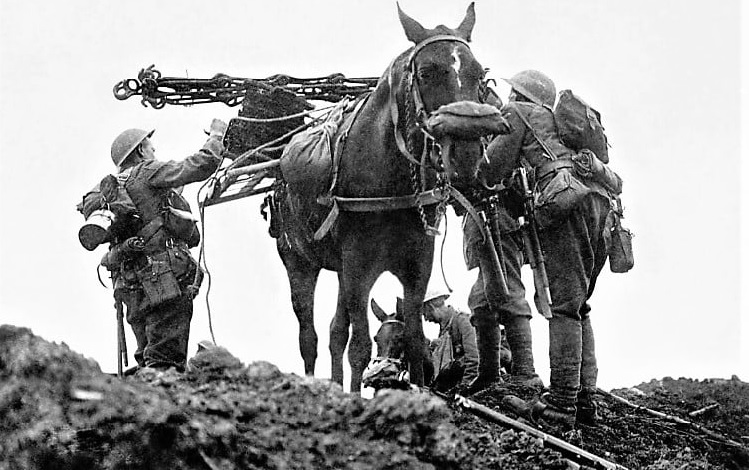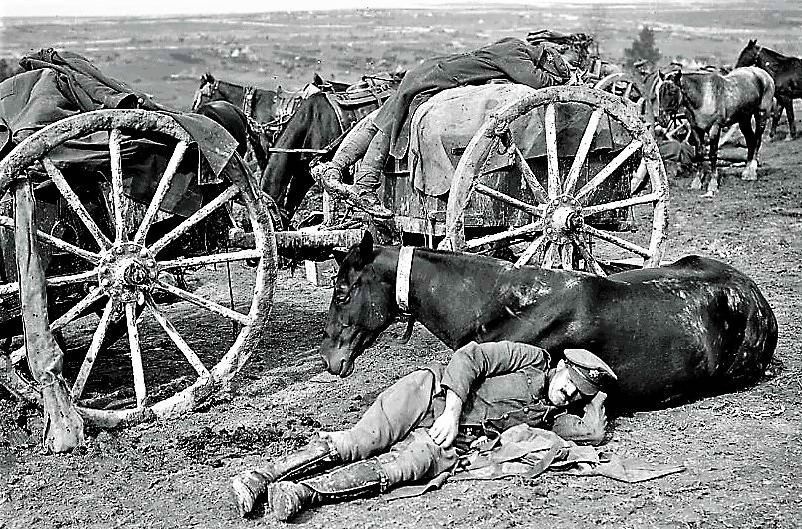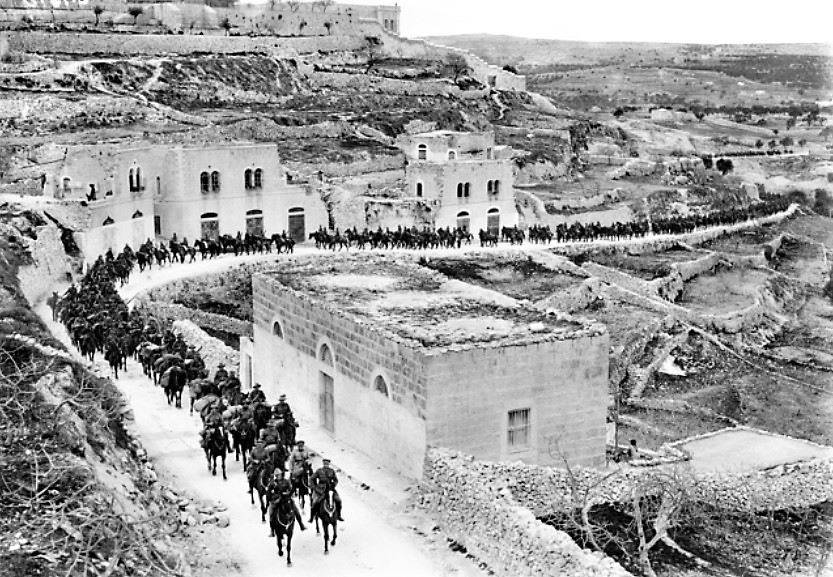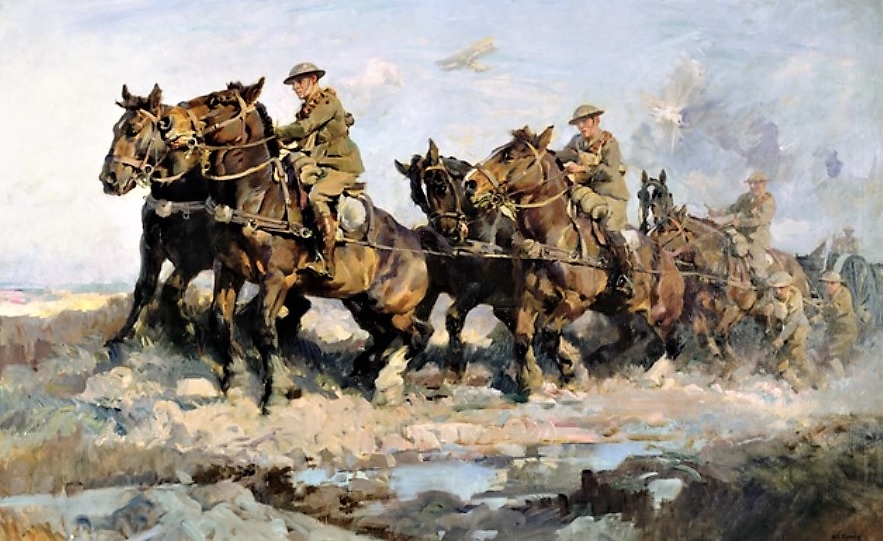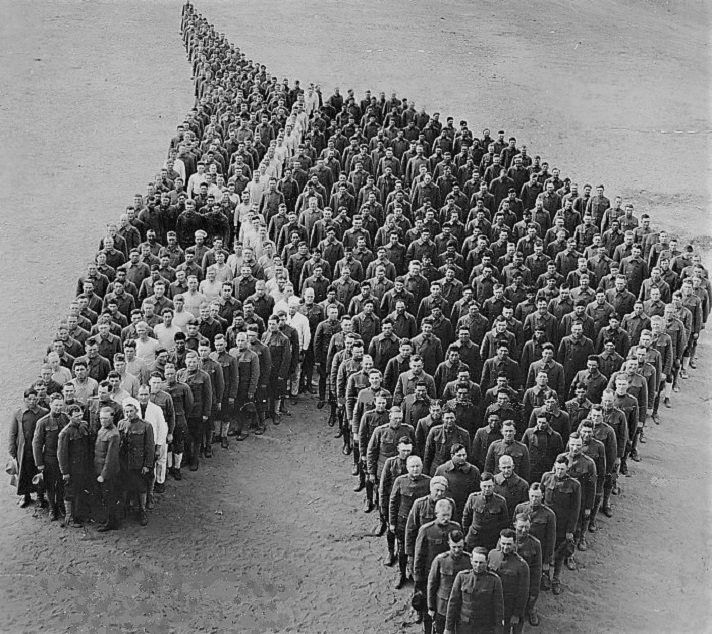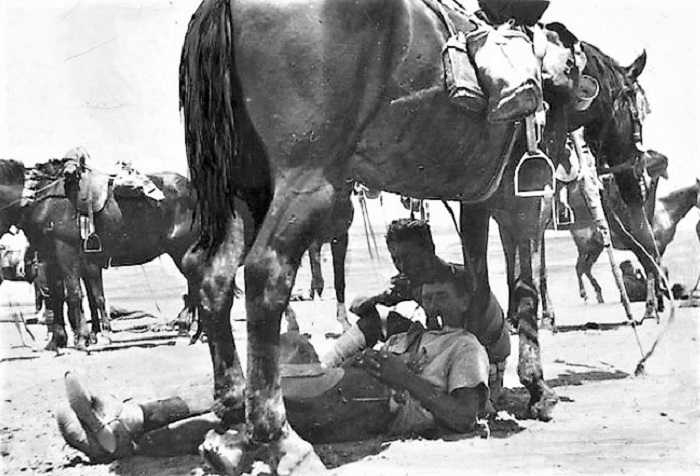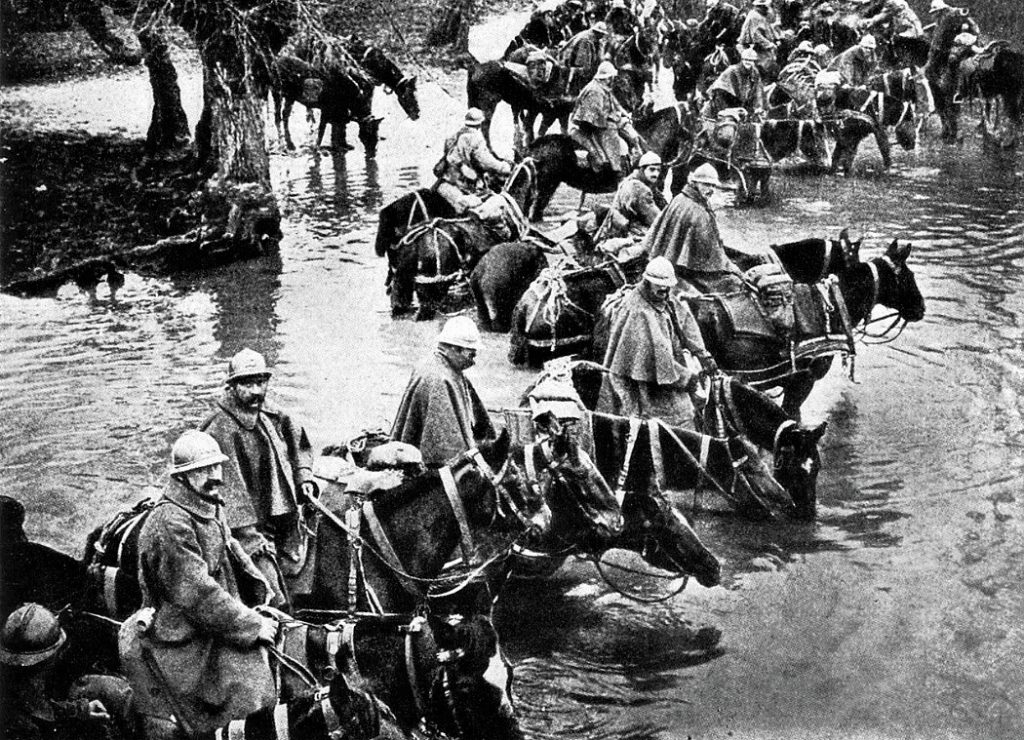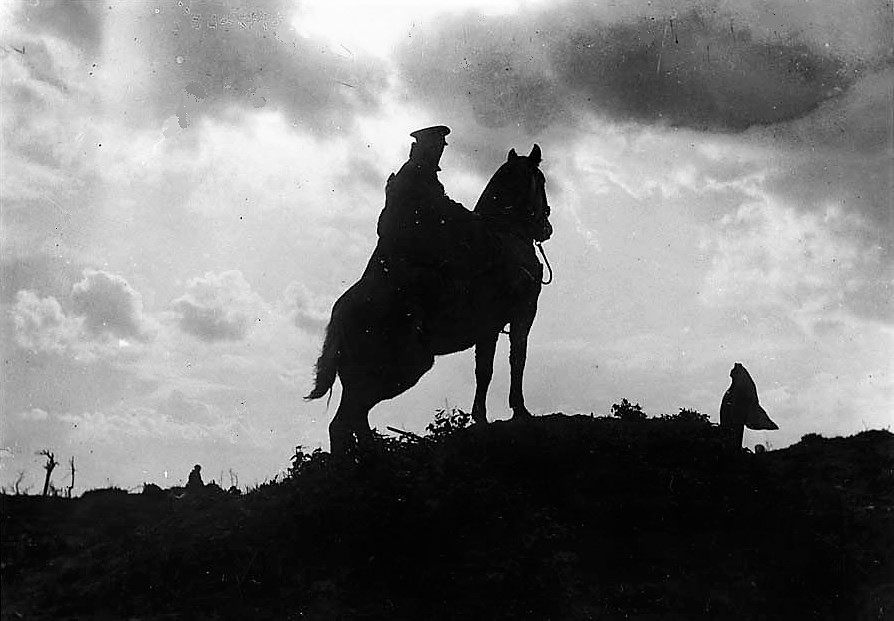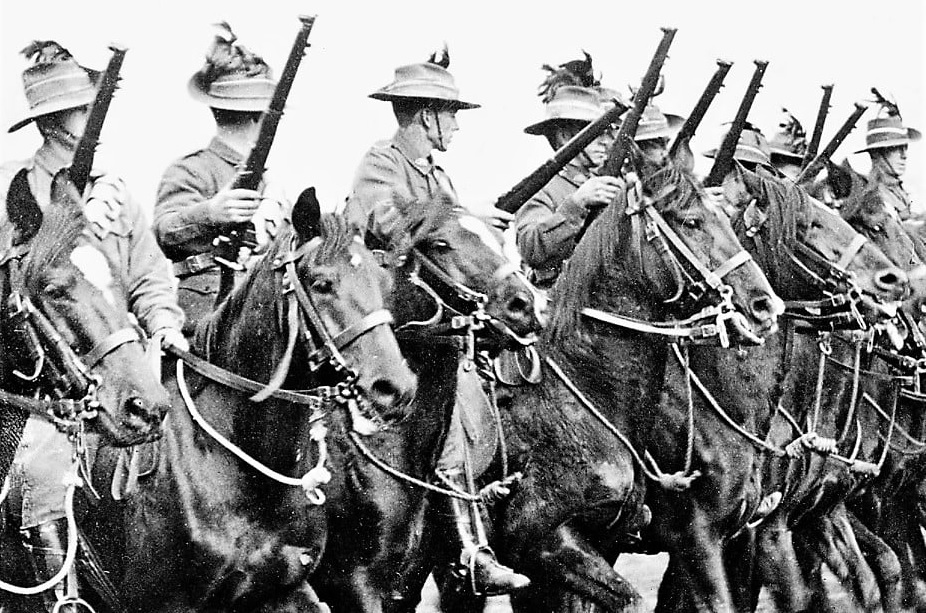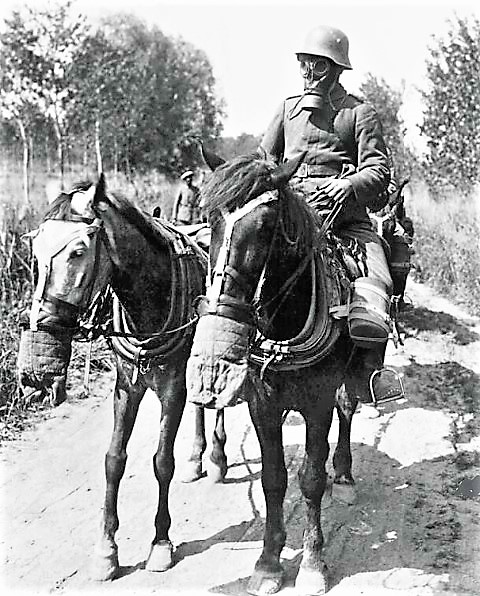Truly an unforgettable image.
One of the most unforgettable photographs that captures the incredible bond between soldiers and their horses.
The loyal and courageous horses of two fallen Australian light horsemen stand behind their graves. Both men were killed when they were ambushed by Turkish soldiers on the 29th of September 1918.
The fallen light horsemen were Sergeant Louis Shannon Brook MM, of Pimpinio, Victoria, and Trooper Clarence William Radburn, of Neville, New South Wales, both of the 1st Australian Light Horse Regiment.
Despite detailed notes and maps on the location of the graves on Trooper Radburn’s service record, they were never found by grave registration units in 1922.
Lest We Forget.
Some information and photograph came from the Australian War Memorial. Image file number AWM P12049.008.
